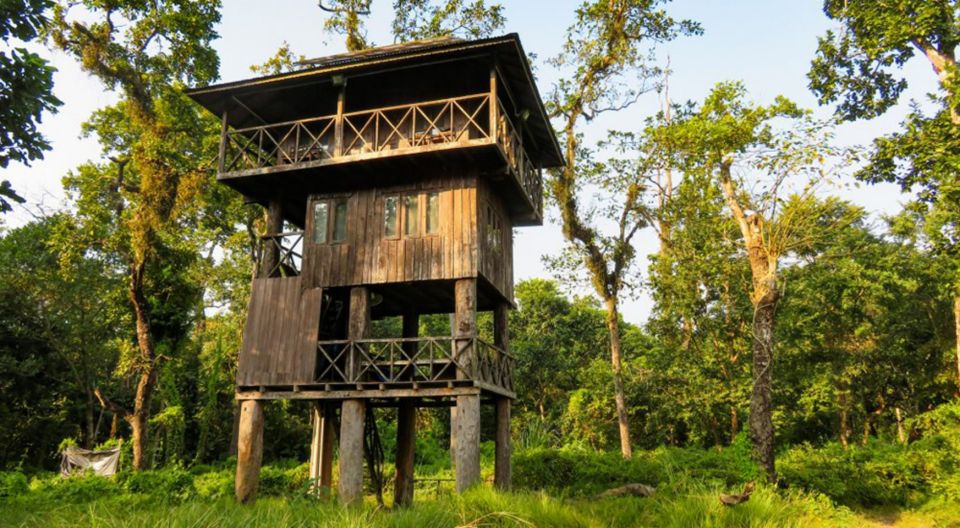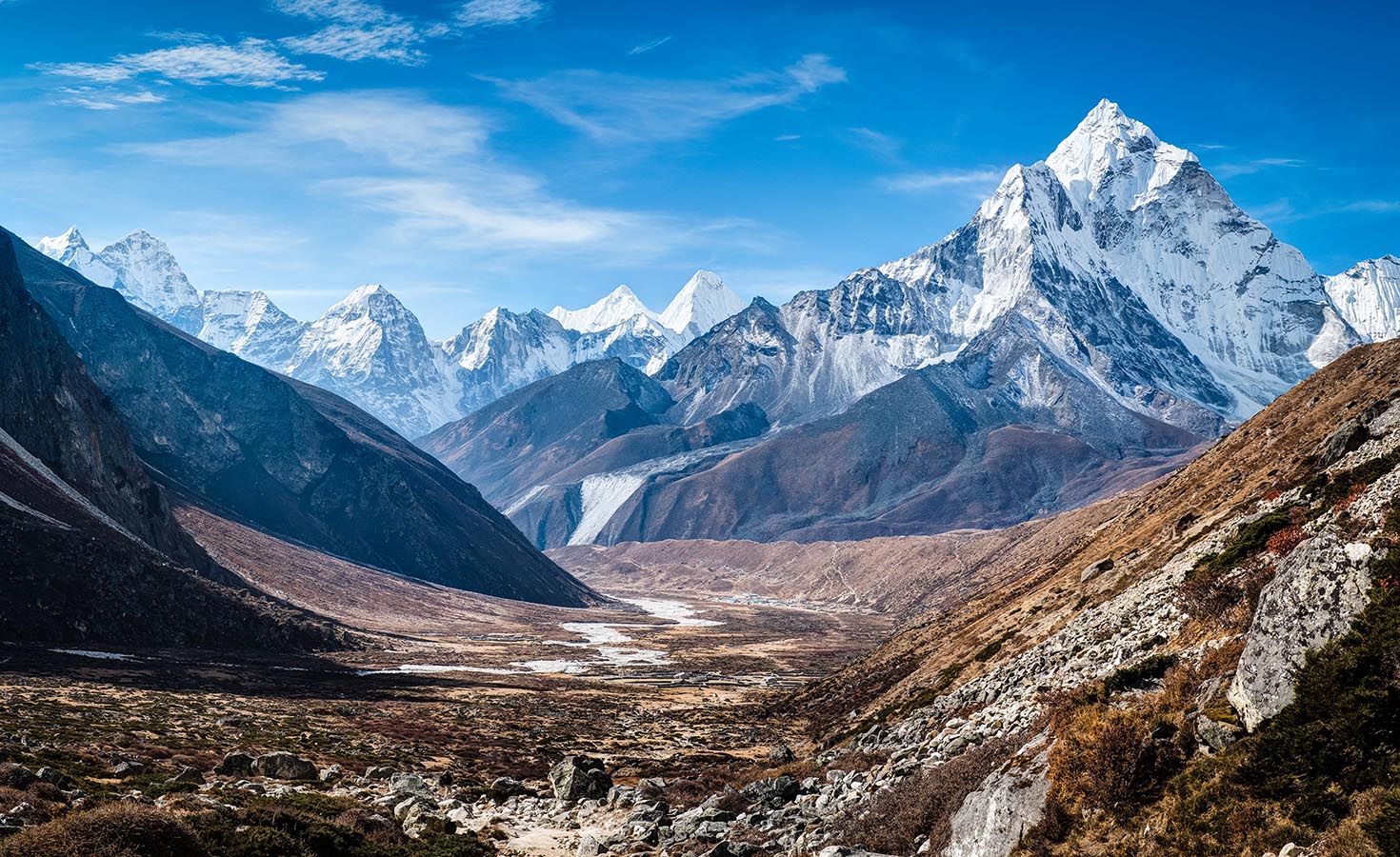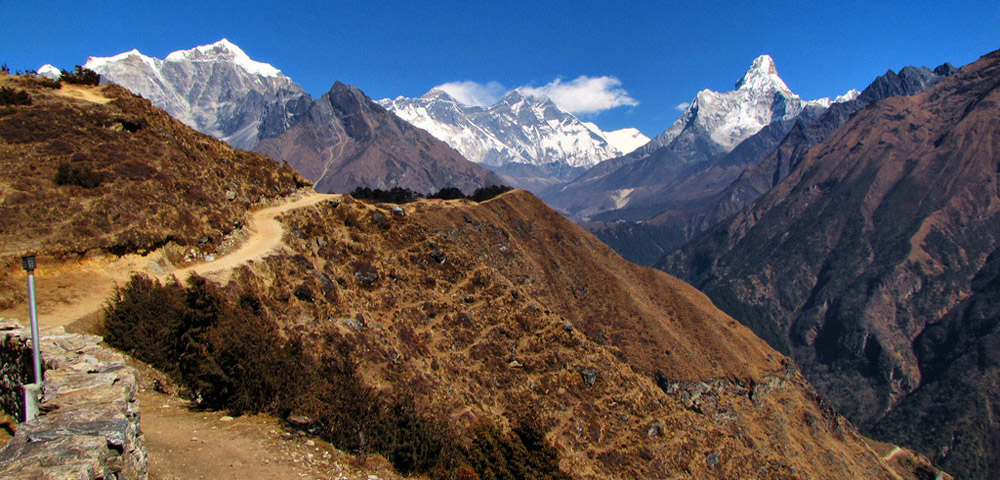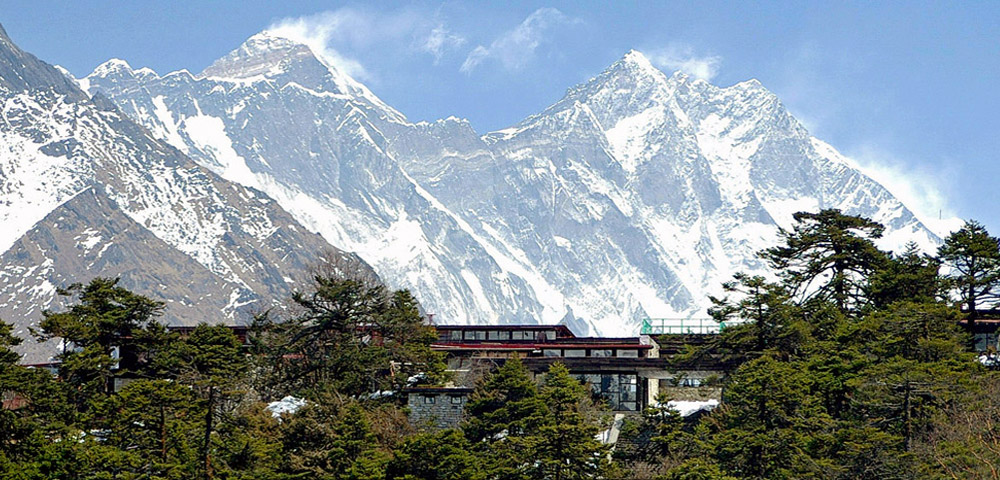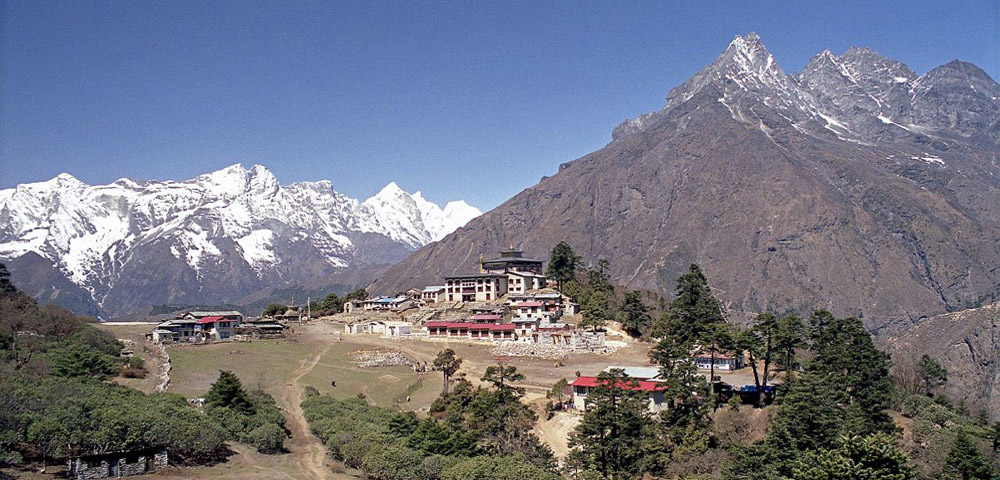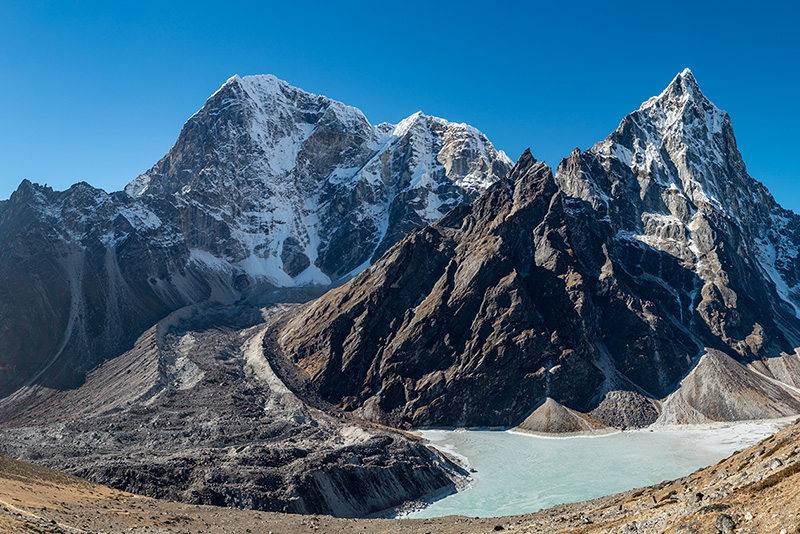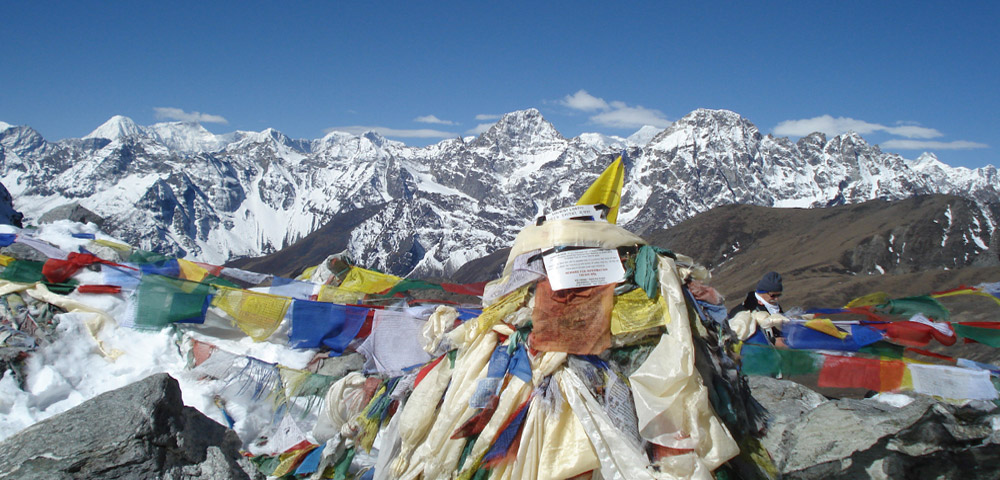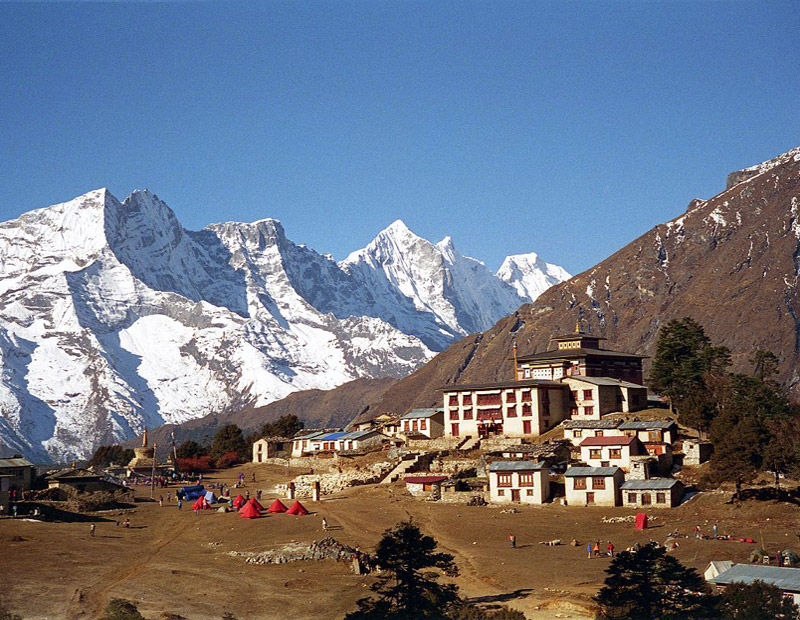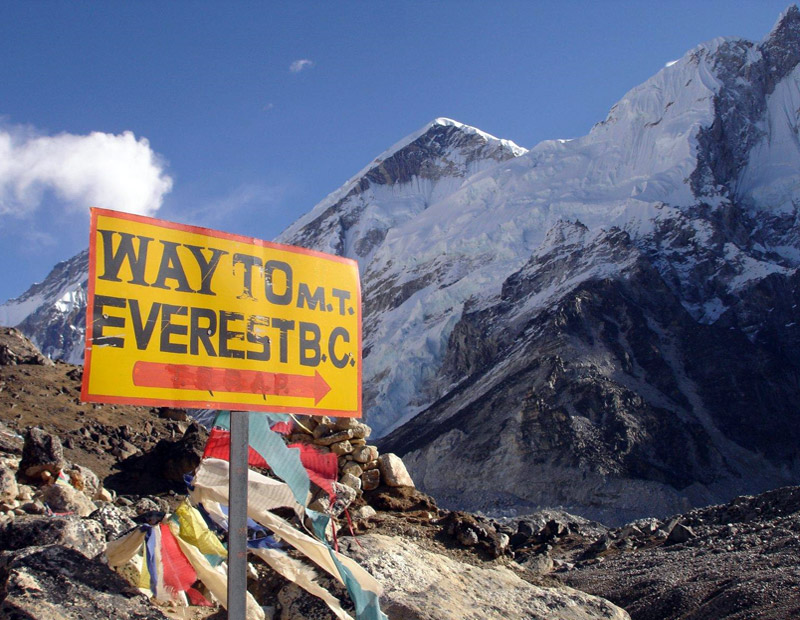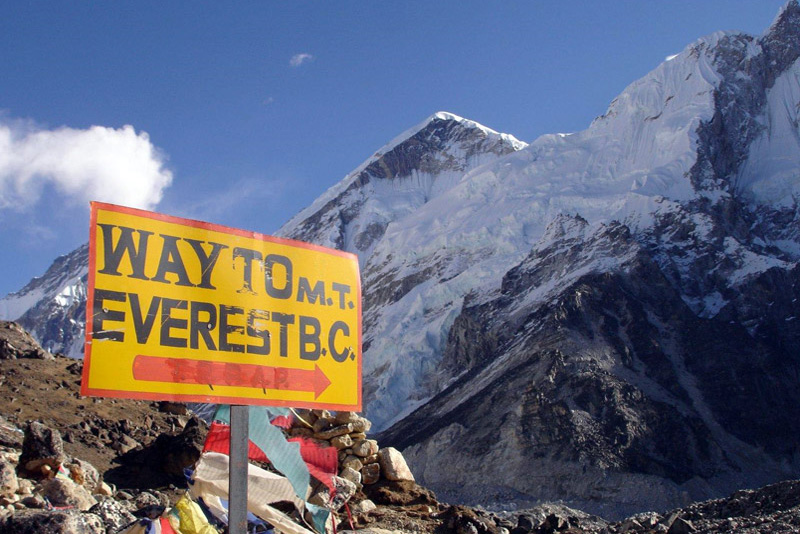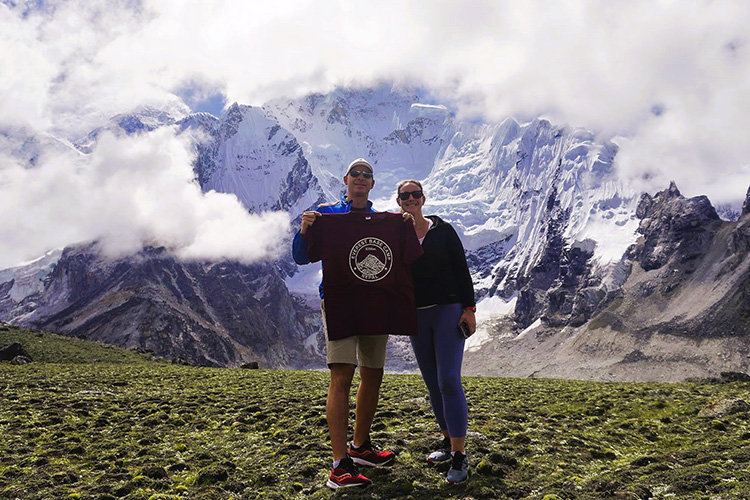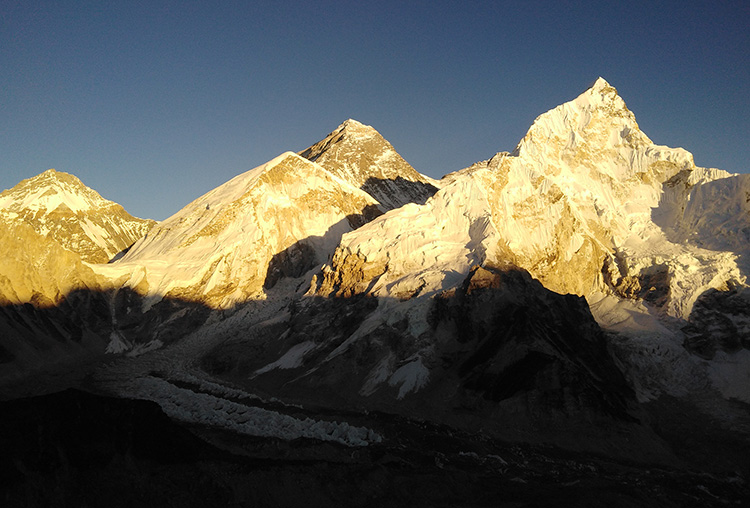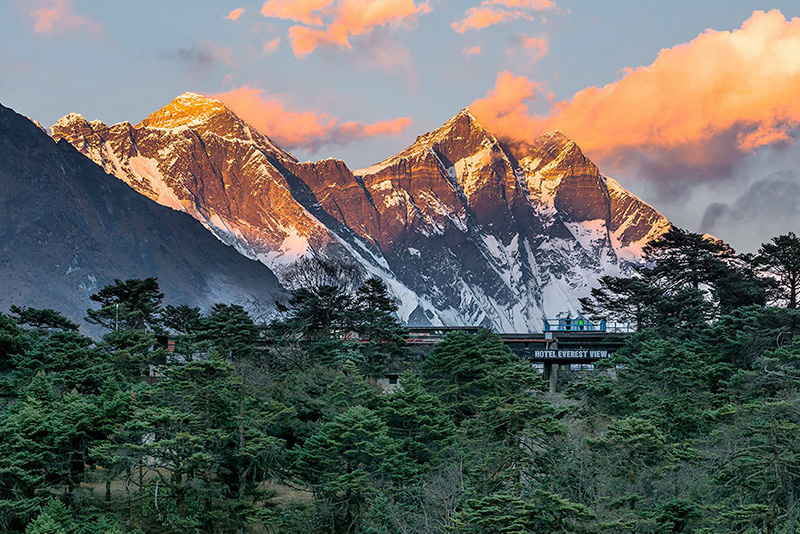Everest Panorama Trek
Everest Panorama Trek is the easiest trek in compared to other treks, and it includes a visit to the Tengboche Monastery (3850m). Everest Panorama Journey is considered a short and simple trek that provides a breathtaking panorama of the world’s tallest peaks. This walk is ideal for those who like to see Mount Everest and other prominent Himalayan peaks, such as Amadablam, Nuptse, Sherpa settlements, and Tengboche monastery, with less effort and in less time.
We fly from Kathmandu to the lukla airport in the khumbu region, then climb up to namchebazar, Tyangboche (renowned for its monastery), and Khumjung, a really pleasant Sherpa community. This walk provides an excellent introduction to the Sherpa people and their culture, and it is a popular destination for first-time trekkers in Nepal. Such treks are ideal for those who wish to learn about Nepal and enjoy themselves in a short amount of time. The Himalayas as seen from Annapurna, Dhaulagiri, Nilgiri, and other prominent mountain ranges at sunrise. From Ghorepani to Tadapani is a six-hour up-and-down trek through a rhododendron forest. The town of Tadapani offers a close-up view of Hiunchuli and Annapurna South. From Tadapani, we descend to Ghandruk village, another of the trail’s most popular and attractive Gurung settlements. From Ghandruk, it is only a five-hour journey to Nayapul, the finish of our trek.
Everest Panorama Trek Highlights
The Everest Panorama Trek is a shorter trek that offers a taste of the Everest region’s stunning landscapes and iconic peaks without the full commitment of a longer trek. It’s a great option for those with limited time or who prefer a less strenuous trekking experience. Here are some highlights of the Everest Panorama Trek.
Scenic Mountain Views: Despite being a shorter trek, you’ll still be treated to breathtaking views of some of the world’s highest peaks, including Mount Everest, Lhotse, Nuptse, Ama Dablam, and Thamserku. These panoramic vistas are the highlight of the trek.
Tengboche Monastery: The trek takes you to Tengboche, home to the famous Tengboche Monastery. This serene and culturally significant site provides not only spiritual experiences but also stunning views of Everest and surrounding peaks.
Sherpa Villages: You’ll pass through charming Sherpa villages, allowing you to experience the local culture and way of life. Interact with friendly locals, visit monasteries, and learn about their traditions.
Rhododendron Forests: Depending on the season, you may have the chance to trek through vibrant rhododendron forests, especially during the spring when the blooms create a colorful and picturesque backdrop.
Namche Bazaar: The bustling town of Namche Bazaar serves as the gateway to the Everest region. Explore local markets, shops, cafes, and enjoy the hospitality of this vibrant Sherpa community.
Moderate Trekking: The Everest Panorama Trek is less physically demanding compared to longer treks in the region. It’s suitable for trekkers with a moderate level of fitness and those who want to experience the beauty of the Everest area without the strenuous climbs.
Cultural Experiences: Immerse yourself in the rich Sherpa culture by visiting monasteries, interacting with locals, and learning about their traditions and way of life.
Everest View Hotel: The trek takes you to the Everest View Hotel, a luxurious accommodation that offers breathtaking panoramic views of Everest and its neighboring peaks. It’s a great place to relax and enjoy the scenery.
Gateway to Everest Base Camp: While the Everest Panorama Trek doesn’t lead to Everest Base Camp, it provides a glimpse of the trail that many trekkers take to reach the base camp. This trek can serve as a wonderful introduction to the region.
The Best time for Everest Panorama Trek
The best time for the Everest Panorama Trek is during the pre-monsoon (spring) season from March to May and the post-monsoon (autumn) season from September to November. These months offer the most favorable weather and trekking conditions for a comfortable and enjoyable trekking experience. Here’s why these seasons are recommended.
Pre-Monsoon (Spring) Season (March to May):
Stable Weather: Spring is a popular trekking season in Nepal. The weather is generally stable, with clear skies, minimal rainfall, and pleasant temperatures during the day.
Blooming Flora: The rhododendron forests and other vegetation come to life with vibrant blooms, creating a colorful and picturesque backdrop for your trek.
Clear Mountain Views: The clear skies offer excellent visibility, allowing you to enjoy panoramic views of the surrounding mountains, including Everest, Lhotse, Nuptse, and others.
Moderate Temperatures: Temperatures are mild and comfortable during the day, making it enjoyable for trekking without extreme cold.
Post-Monsoon (Autumn) Season (September to November):
Stable Weather: Autumn is considered the best trekking season in Nepal. The weather is stable, with clear skies, minimal rainfall, and comfortable temperatures during the day.
Excellent Visibility: The clear skies provide exceptional visibility, allowing trekkers to enjoy unobstructed views of the mountains and the surrounding landscapes.
Festivals and Local Life: This season is also a time of festivals and celebrations in Nepal, adding cultural experiences to your trek. The local communities are active, and you’ll have opportunities to engage with locals and learn about their traditions.
Moderate Temperatures: Similar to spring, temperatures are mild and pleasant, providing comfortable trekking conditions.
The Everest Panorama Trek is a shorter and less strenuous trek compared to other routes in the Everest region. It’s a great option for those with limited time or those who prefer a more relaxed trekking experience. Despite its shorter duration, it still provides stunning views and cultural experiences.
Our agent will transfer you to the hotel from the airport. Hotel check-in followed by sightseeing tour. Spend the night in Kathmandu.
Proceed with the UNESCO Heritage Sightseeing Tour after breakfast. After visiting Swyambhunath Temple, Kathmandu Durbar Square, Patan city, and Khokana Village, you will be transferred back to your accommodation. Spend the night in Kathmandu.
In the morning you travel for a magnificent mountain flight to Lukla – a gateway from where the trip begins. The approximately 35-minute mountain flight provides a breathtaking view of the Himalayan Range. From Lukla, the trip begins along stone-paved trails leading to Bhaisekharka, and eventually reaches Phakding. On the route, there are numerous prayer rocks. Stay the night in Phakding.
The walk passes through a pine forest and along the Dudh Koshi River. Along the route, there is a magnificent view of the shimmering Mount Thamserku (6618m). Passing via the settlements of Benkar, Chumoa, and Monjo, the entry to Sagarmatha National Park is reached. The trail then ascends through trees and over bridges to the confluence of the Dudh Koshi and Bhote Koshi rivers. Prior to reaching Namche Bazaar, the trail passes past Jorsale Village, where you will catch your first glimpse of Mount Everest. Overnight in Namche.
You will stay three nights in Namche Bazaar to acclimatize gradually. During this period you trek to the Everest View Hotel (3,900m) and to Thame (3,844m), where Tenzing Norgay grew up. The majority of trekkers only spend two nights in Namche before continuing up the mountain, however based on our experience, this extra night considerably improves your odds of reaching base camp without a headache!
Our route of today to Tengboche weaves in and out of side valleys, making small ups and downs, to the teashops of Kenjoma, and joins the trail from Khumjung just before a collection of mani stones. The views of Everest and Ama Dablam are excellent from this part of the trek. We pass the small settlement of Sanasa from where the trail drops towards Phunki Thanga (3250m). From here the trail climbs steeply through forests and around mani stones as it follows the side of a hill to the saddle on whichh the monestary of Tengboche sits at 3870m. The view from here is rightly deemed to be one of the worlds most magnificent. Kwangde (6187m), Tawachee (6542m), Everest, Nuptse, Lhotse (8501m), Ama Dablan, Kantega and Thamserku provide an inspiring panorama of Himalayan giants. We will spend the night in Tengboche village (5 hrs).
Today we return halfway back to Namche Bazaar befor starting our hike up to the largest Khumbu settlement of the valley, Khumjung village. From Khumjung village a great view from Mt. Everest can be seen (4-5 hrs).
Today we descent first to Namche Bazaar and then continue our way back down the valley and descent steeply back to the Dudh Kosi river and continue our way past the national park checkpoint at Monjo. From Monjo we will go through forests of magnolia, giant firs and rhododendrons to Chomoa, the site of an agricultural project. We cross the Dudh Kosi river to its west-bank and continue our way down to Phakding (5 hrs).
Today we retrace our route from day 01 back to the transit village of Lukla, where we have to reconfirm our flight tickets for the next day. Overnight in Lukla (3 hrs).
Today we fly back to Kathmandu. This early morning flight is because of the location of the airstrip, and the often clear morning views from the plane one of the most interesting flights you’ll ever experience. Overnight stay at hotel.
Morning, you will be free. Afternoon we will drop you to the Kathmandu International Airport for the departure flight to home.
- All necessary ground transfers.
- All necessary accommodations as per the itinerary.
- Tea House accommodations during the trek.
- Daily breakfast, lunch and dinner during the trekking.
- All necessary paper works.
- All necessary trekking permits.
- Experienced and First Aid-trained trekking guide.
- Strong, helpful porters.
- Comprehensive medical supplies.
- Trekking map.
- Insurance of all local team.
- Warm clothing and trekking gear for staff.
- Sleeping bag and trip duffle bag.
- Trekking certificate issued by us.
- Welcome and farewell dinner in Kathmandu.
- Nepal Visa fee.
- International flights.
- All meals not mentioned in inclusions.
- Personal expenses not stipulated.
- Optional add-ons.
- Gratuities.
You might also like...
Top Add-on Trips
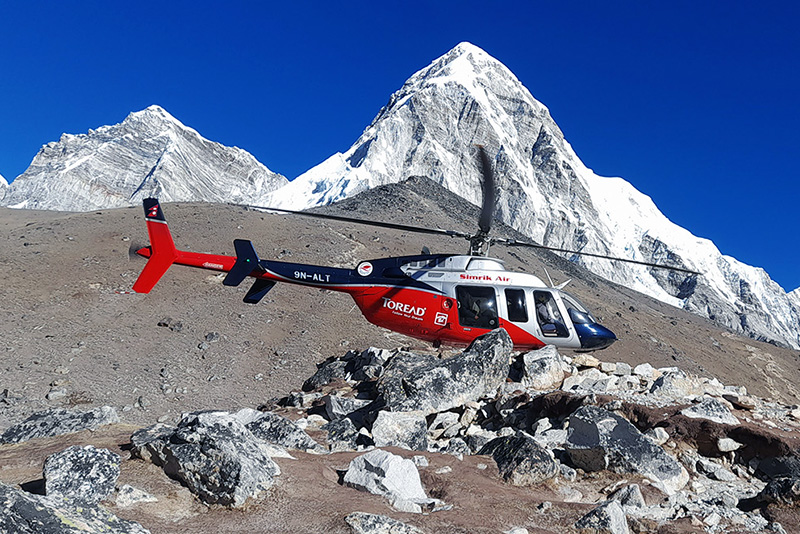
Everest Base Camp Helicopter Tour
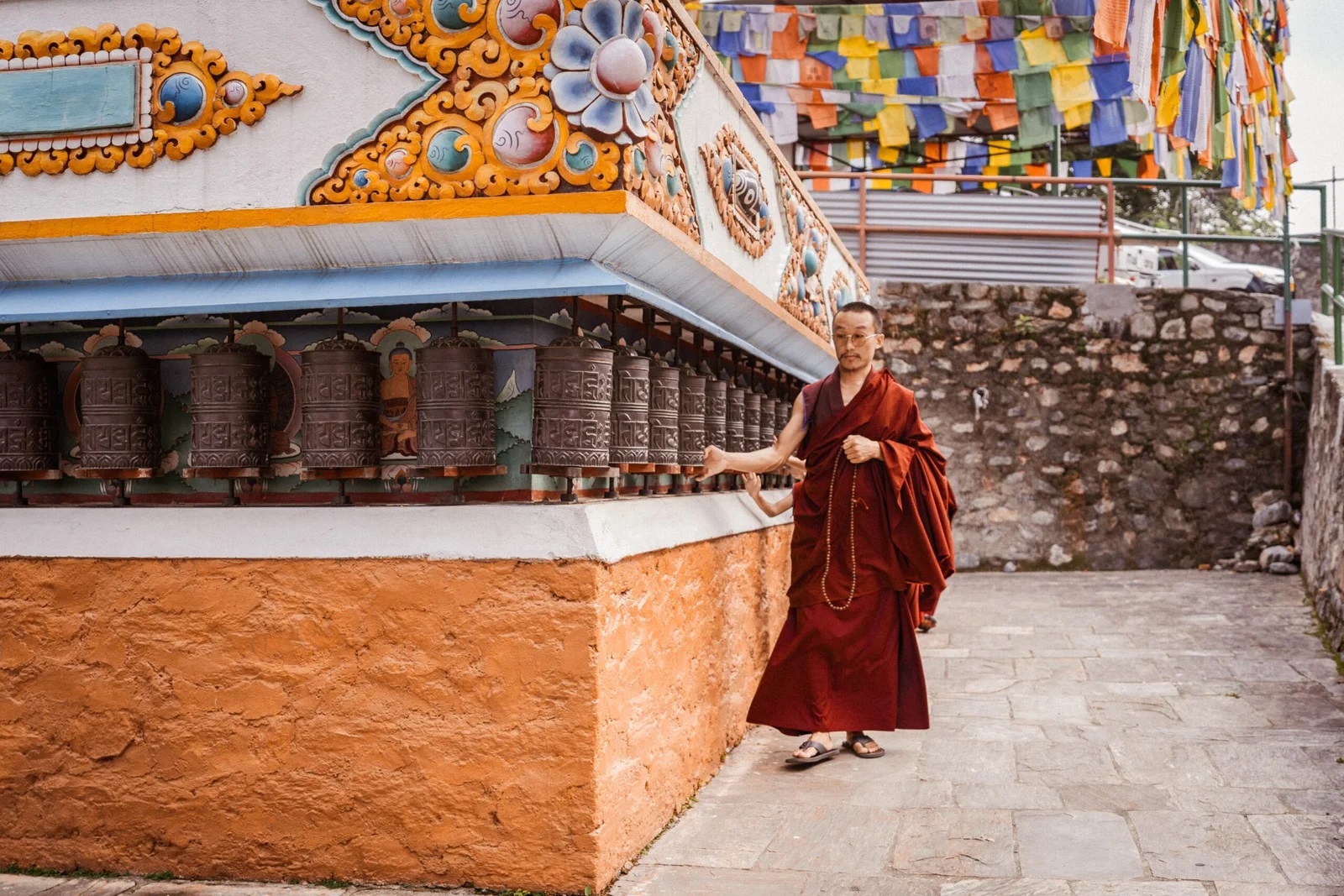
Monastery Stay Tour
